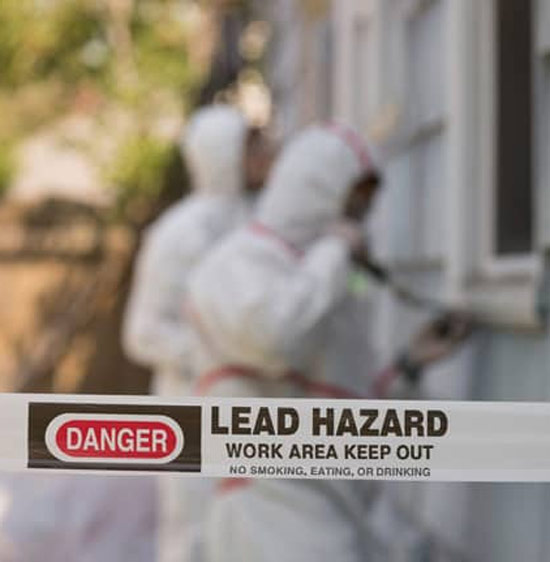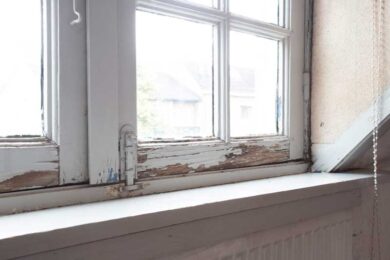Step-by-Step Refine for Effective Lead Offense Removal
Following this, adherence to government and state regulations is extremely important to creating an efficient remediation plan. The actual remediation requires knowledgeable workers to apply these plans while strictly complying with security methods. What occurs after the removal is finished?

Detection and Analysis
Discovery and assessment are important actions in the remediation of lead offenses. To make sure a reliable remediation procedure, it is crucial to conduct an extensive exam of the environment where potential lead exposure exists.
Once discovery is completed, a detailed evaluation needs to be taken on. This consists of assessing the degree and seriousness of contamination, as well as determining populaces in jeopardy, specifically youngsters and expecting women. Threat assessments often involve tasting and laboratory analysis, ecological surveys, and health and wellness influence research studies. The gathered data ought to be thoroughly recorded to sustain the advancement of a reliable remediation approach (Lead Violation Removal in NYC).
Furthermore, it is essential to focus on locations with the greatest degrees of contamination and those that pose the best wellness dangers. Efficient communication with stakeholders, including homeowner, homeowners, and public health authorities, is important for making sure that all celebrations are notified about the searchings for and the succeeding actions required for remediation. This initial detection and evaluation stage lays the groundwork for a successful lead infraction removal procedure.

Lawful and Regulative Conformity
Browsing the landscape of legal and governing compliance is an essential aspect of effective lead violation removal. Conformity ensures not only the safety of affected populaces but likewise the reliability and legal standing of the organization liable for remediation. Rules controling lead contamination are multifaceted, including government, state, and neighborhood regulations. At the federal level, the Epa (EPA) establishes stringent standards under the Poisonous Materials Control Act (TSCA) and the Lead-Based Paint Remodelling, Repair Service, and Painting Regulation (RRP Regulation)
This includes meticulous paperwork of all remediation activities to show compliance. Failing to stick to these laws can result in serious penalties, consisting of significant fines, legal activity, and reputational damages.
Engaging legal experts specialized in environmental law can help with browsing these complexities. Routine training and qualification for all employees associated with the remediation procedure are likewise required to ensure adherence to safety and security and regulatory criteria. By focusing on legal and governing conformity, organizations can efficiently alleviate dangers and accomplish a successful removal end result.
Preparation the Removal
Properly preparing the removal of lead infractions begins with a comprehensive evaluation of the contaminated website. This preliminary analysis should consist of a detailed website investigation to recognize the level and focus of lead contamination. Comprehensive tasting and research laboratory analysis are vital to develop an accurate contamination account. This data-driven method guarantees that removal initiatives are appropriately targeted and reliable.
When the contamination is mapped, a risk assessment ought to be performed to review possible health threats to human beings and the setting. Lead Violation Removal in NYC. This evaluation needs to consider factors such as direct exposure pathways, population vulnerability, and ecological impacts. The insights collected will certainly develop the basis for selecting a proper remediation technique
Ultimately, setting clear, attainable click for source objectives for the removal job is essential. These objectives must line up with regulatory standards and stakeholder expectations to make sure conformity and community approval. Creating an in-depth removal strategy that describes approaches, timelines, and source allowance will certainly assist in a structured technique to the clean-up process.
Furthermore, it is necessary to involve with stakeholders early and keep clear interaction throughout the preparation stage. This consists of educating regional areas, getting essential authorizations, and coordinating with regulative firms to guarantee all legal and step-by-step requirements are met. A well-crafted remediation plan not only resolves the contamination efficiently however also develops count on and teamwork amongst all parties entailed.
Implementing the Remediation
With a well-structured removal plan in position, the emphasis moves to the real execution of the remediation activities. This phase involves setting in motion the required resources, including knowledgeable workers, specific tools, and top notch products. Begin by plainly defining functions and obligations to ensure responsibility and seamless sychronisation amongst group participants.
This consists of setting up containment locations to prevent lead dirt and debris from dispersing, as well as utilizing air filtration systems to maintain air quality. Utilize methods such as damp scratching, chemical stripping, or encapsulation, depending on the extent and place of the contamination.
Throughout the removal process, conduct periodic evaluations and air quality keeping track of to ensure conformity with regulatory requirements. Reliable interaction with stakeholders, including homeowner and occupants, is critical to maintain them informed of progress and any type of unforeseen advancements. By diligently adhering to these actions, the remediation activities can be carried out effectively and properly, ultimately mitigating lead risks.
Post-Remediation Techniques
Post-remediation approaches play an essential duty in making sure the long-term success of lead infraction removal initiatives. These approaches incorporate recurring monitoring, maintenance, and neighborhood education to stop future lead exposure and guarantee a secure setting.
First, regular monitoring is essential. This involves routine screening of the formerly influenced areas to make sure that lead degrees continue to be within safe restrictions. Homeowner ought see this to establish a timetable for these examinations, preferably in partnership with certified environmental specialists.

Third, informing the community plays a crucial duty in maintaining the advantages of removal. Locals and building supervisors should be educated regarding the threats of lead exposure and the finest practices for preserving a lead-safe atmosphere. Workshops, informational handouts, and neighborhood meetings can be effective devices for distributing this info.
Final Thought
Successful lead violation removal needs a thorough, systematic method including discovery and evaluation of contamination, adherence to lawful and regulatory criteria, precise preparation, and reliable implementation of removal initiatives. Post-remediation approaches, consisting of constant tracking and area education and learning, are important to sustain a lead-safe atmosphere. Partnership with ecological experts makes certain ongoing conformity and defense of public wellness. This methodical process highlights the significance of thoroughness and alertness in resolving and reducing lead contamination.